I love cheese. It’s one of my favorite foods – sliced, melted, grated, schmeared, grilled, you name it.
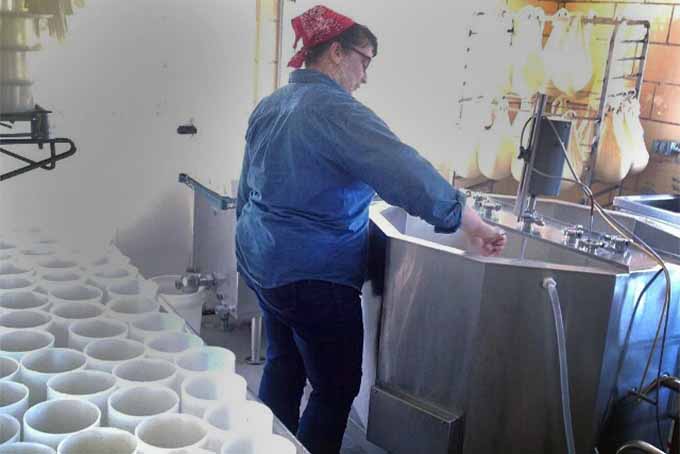
For the past six years, I’ve worked with small-batch cheesemakers around Philadelphia to source their unique, handmade dairy delights on behalf of my CSA members, shoppers, and chef customers. I even scored a weekend gig repping the products of one cheesemaker friend of mine, Valley Milkhouse Creamery, at my local farmers market.
Getting paid to extol the virtues of delicious local cheeses to passersby? Sounds like the perfect job for me.
This summer, I realized a longtime dream when I was given the opportunity to spend a week working in the cheese room at Valley Milkhouse while their intern was away. The creamery is located in Oley, Pennsylvania, a little more than an hour northwest of Philadelphia.
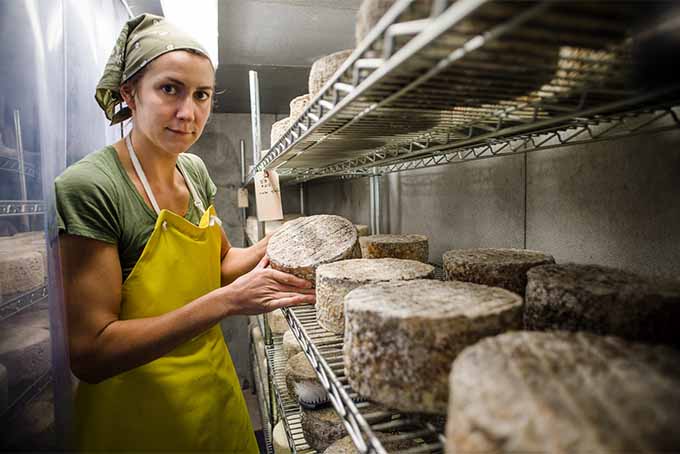
There, cheesemaker Stefanie Angstadt makes artisan cheese, cultured butter and buttermilk, and cream-top yogurt that she sells at city farmers markets and to retailers and chefs, as well as at her creamery’s on-site farm stand.
Valley Milkhouse cheeses are named for plants native to the Oley area. During my week there, we rolled logs of Clover, Angstadt’s tangy, creamy fromage blanc-inspired fresh cheese; flipped immature wheels of Thistle, her Brie style; dusted pyramids of her Valencay-inspired cow’s milk cheese, Witchgrass, with their signature coat of inky black vegetable ash; and pierced each wheel of Blue Bell, her Roquefort-inspired cheese, with a skewer no less than 50 times each.

The hours were long, with lots of heavy lifting, flipping, wrapping, washing, and scrubbing, but it’s some of the most fulfilling work I’ve done in a long time.
Aside from the true value of a comfortable pair of muck boots or work shoes, here are seven lessons I learned during my week as a cheesemaker’s apprentice that I think could do us all some good as we move about our kitchens.
1. Cleanliness Is Everything
In any dairying operation, sanitation and hygiene are paramount. A small tub of sanitizer-spiked water sits just inside the door to dip your boot soles in after any steps taken outside the make room.
Dishes, racks, and pans are washed, rinsed, and sanitized in a perpetually full three-sink setup, then air-dried and stored – and dipped in sanitizer once more right before their next use. The creamery has its own hot and cold water hose inside so that racks, tables, walls, floors and, of course, the cheesemaking vat can be hosed down with piping hot H2O.
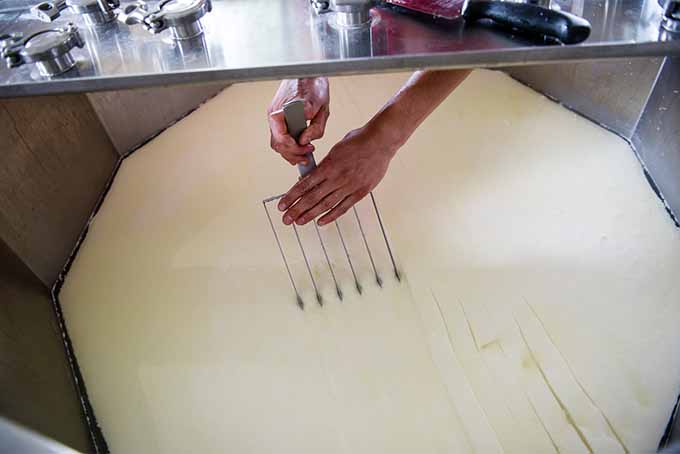
It’s a clean person’s dream, everything shiny and germ-free – an aspirational image that might not move you to install your own three-bay sink, but will hopefully spur you to clean your stovetop and backsplash a little extra hard when you think about it.
One innovation I loved: the use of a squeegee to instantly remove wetness from the just-sanitized sheet pans that hold and transport wheels from make room to aging cave and back again.
2. Pre-rinsing Is Key
When you’re washing 20 casein-encrusted drain mats, several dozen cheese forms, or hitting several square feet of stainless steel table with a scrubby pad (again), it really pays to pre-rinse.
Angstadt keeps a bucket of hot, soapy water on hand for this purpose – it makes the suds in her wash water last longer when it’s time to do dishes (especially useful after an afternoon of portioning and wrapping butter, when everything’s covered in a thin film of grass-fed grease).

Do something nice for your future self and don’t forget to hit that empty casserole dish or soup pot with some dish soap, to soak while you enjoy whatever messy-yet-delicious delicacy you just made.
Feeling inspired to get your clean on in your own kitchen? Check out all of the amazing guides in our kitchen cleaning how-to section.
3. Read Recipes & Take Meticulous Notes
Even though she’s rounding the corner on her five hundredth batch of cheese, Angstadt still consults her notebook of recipes as she makes each one. (She’s also required to keep temperature logs for her cheese vat on file, but I’m pretty sure the health inspector won’t show up at your door demanding to see your records if you make a batch of homemade yogurt (check out our recipe for dairy-free coconut yogurt).
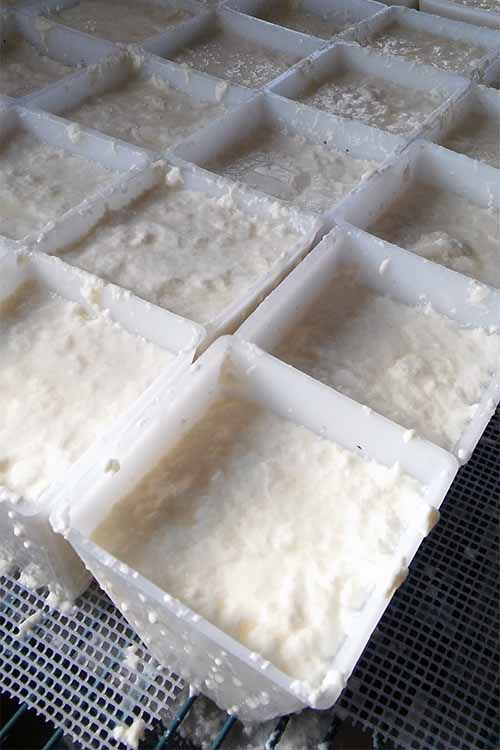
Making extra-sure you’re following a recipe properly – especially with finicky items like baked goods or cultured cheeses, where milliliters make a difference and seconds count – is the best way to make sure you’re never disappointed with the result of your food dollars and hard work in the kitchen.
4. Source Only the Best Ingredients
While Valley Milkhouse products themselves aren’t certified organic, Angstadt only sources certified organic milk for her products (the cream she sources from Seven Stars Farm is also certified biodynamic).
Angstadt’s source farms also operate in such a way that prioritizes the health and nature of the animals – the cows are fed grass or hay exclusively, and spend their time grazing organic pastures.
This makes for healthy milk, with the fat and protein levels and seasonal variation that make it
perfect for small-batch cheesemaking.
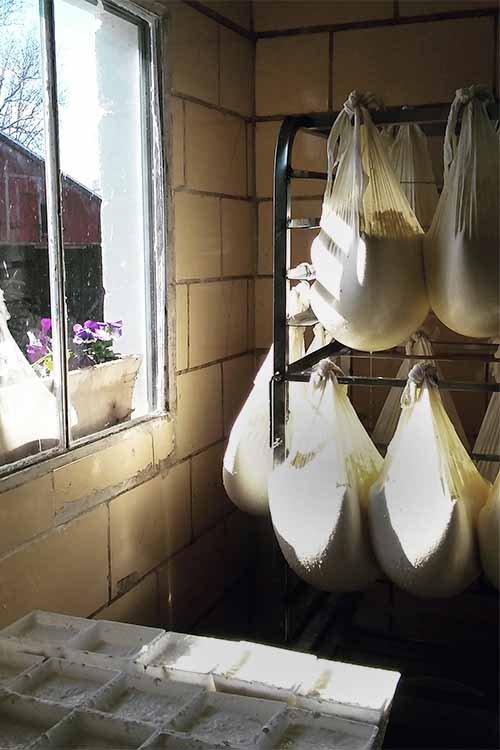
Angstadt also sources her milk raw, pasteurizing it herself for younger cheeses and going raw for cheeses like Gouda and Roquefort styles that will be aged more than 60 days.
It goes without saying that finding the freshest, best-quality ingredients you can afford is a good guideline for any cook. But starting with raw milk for making your own yogurt or cheese makes a huge difference in the end.
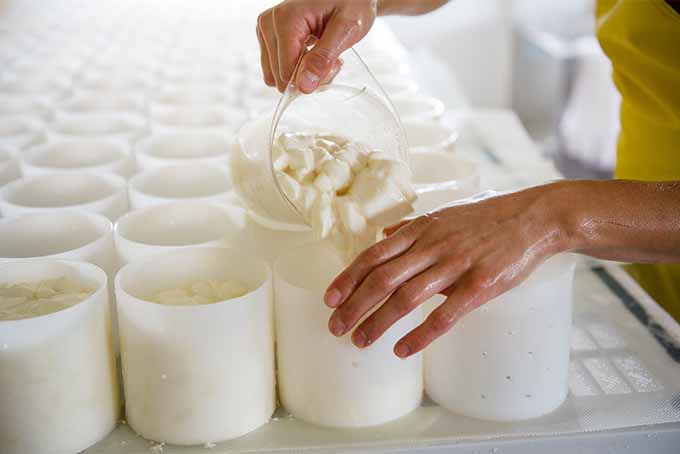
Angstadt and I are both lucky to live in Pennsylvania, a pretty ag-friendly state that permits raw milk for sale at grocers and co-ops, not just on-farm.
If you’re making any sort of processed dairy products at home (and you have access to it), it definitely pays to use raw milk – you’ll get a richer, more flavorful product, even if your recipe includes a pasteurization step.
5. Don’t Be Afraid to Turn a Crisis into an Opportunity
Imagine spending hours heating 90 gallons of milk, inoculating with culture, waiting, adding rennet, waiting, cutting the curds, stirring them, hooping them into forms to drain, waiting, flipping the wheels, waiting, salting them, waiting some more, moving them to wooden boards in your aging space, piercing them fifty times each with a skewer, flipping them several times per week, and wrapping them in foil to wait two more months for them to be street legal.
Then, the moment of reckoning arrives: You take a wheel down from the shelf and remove the foil. The rind is mottled with a healthy array of gray, green, and blue mold – all good signs. You pierced the hell out of that cheese so that the P. roquefortii you added could get all the oxygen it needs to stripe the interior of your wheels with vibrant, flavorful blue veins.

You cut the wheel in half. The paste is white as milk. You die a little bit inside.
Luckily, it still tastes great, and you’ve got several thousand dollars’ worth of inventory in the wings, so it’s time to get creative. That’s what Angstadt did when the scenario above happened with a few batches of Blue Bell that she made with raw sheep’s milk last fall.
Its rich texture and full flavor made up for the fact that Ivory Bell – its new name – didn’t quite turn out as planned.
Remember this the next time your homemade ice cream doesn’t freeze in time (it’s a cooling and seasonal cream soup!), or your jam sets up too firm (it’s pâte de fruit in a jar!). You meant to do it that way!
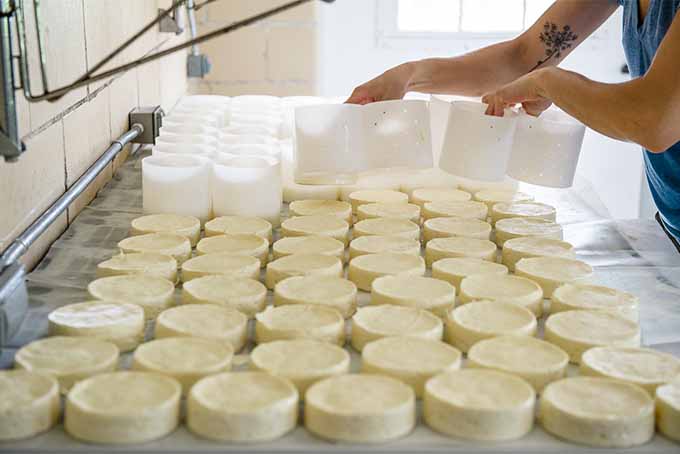
6. Make Time for a Proper Lunch
When you’re doing physically demanding labor – like lugging 80-pound milk cans and carrying trays of cheese wheels to and fro – for 10-12 hours per day, it’s important to take breaks.
Angstadt learned the value of a sit-down lunch once her intern came on this season; before that, she was snatching nourishment whenever she could find a few minutes, often in the car, and never really gave herself a midday break.
As her fill-in intern for the week, I had the privilege of joining Angstadt for lunch, which always involved a fresh-from-the-fields salad of, say, Bibb lettuce, hakurei turnips, and snap peas and a drizzle of vinaigrette; fresh strawberries we gleaned from a nearby CSA farm’s you-pick fields after a cheese delivery; soft-boiled eggs, and (always) Valley Milkhouse cheese served with fresh wood-fired bread from a local artisan.
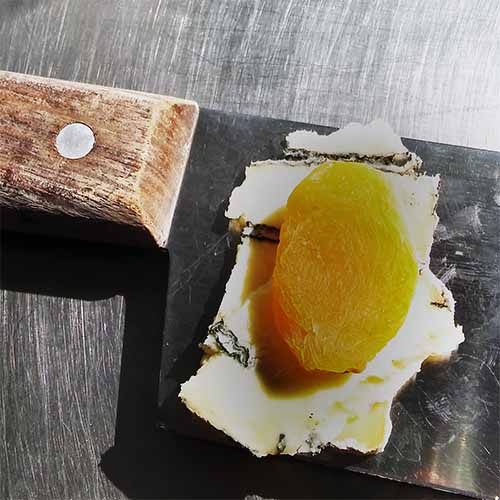
We’d spend a few minutes on prep, eat on the back porch with a view of the creek and its picturesque covered bridge, digest and chat for a bit, and then go back to it, refueled.
Even if you’re not cooking in your home kitchen like it’s your job, we’ve all been there during a particularly arduous session of dinner party prep or holiday meal madness.
It’s important to carve out a few minutes, if you can, to rest your feet and eat something more than a few pieces of whatever’s edible on the cutting board. That way, you’ll be in better shape to enjoy the fruits of your labor, especially when guests are waiting in the wings.
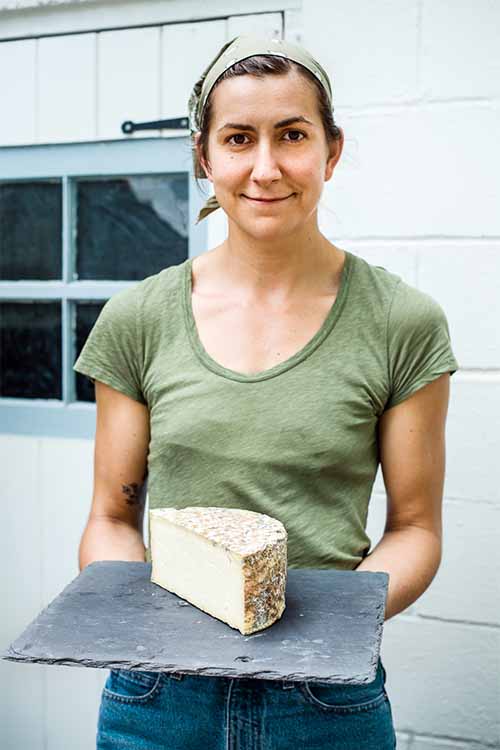
7. Share the Goodness
Any time I’ve visited Valley Milkhouse – for a day of work, a meeting, whatever – I never leave without something delicious, courtesy of the cheesemaker.
Angstadt’s generosity with her products, and her joy at sharing them with her customers, neighbors, colleagues, and friends, is so inspiring. It reminds me that the real reason I’m putting up these garlic dill pickles or bourbon cherries is to bring them with me on family visits and give them to friends to enjoy, not (just) for me to hoard for myself.
I’ve gotten good at maintaining my own cheese karma, too: I can be counted on to show up to any food-related gathering with an impromptu cheese plate and some homemade accoutrements, spreading the dairy love (sometimes literally, onto a cracker) wherever I go.

Inspired to roll your sleeves up and make your own homemade cheese (or even your very own meat and cheese board)? Stay tuned – recipes are coming soon!
Want to join the conversation? Tell us all about your favorite types of artisanal cheese and share your pro-inspired kitchen tips with us in the comments!
Photos by Alex Jones, © Ask the Experts, LLC. ALL RIGHTS RESERVED. See our TOS for more details. Additional images by Stefanie Angstadt and Cynthia Van Elk.
About Alex Jones
Alex Jones is a local food consultant and writer based in Philadelphia. Evangelizing about local food is second nature to Alex, whether she’s working an artisan cheesemaker’s farmers market stand or developing growth strategies for her favorite small-scale artisans. Her favorite areas to work in currently are the artisan cheese and pastured meat supply chains. When she’s not working, Alex spends her time managing her usually-overstuffed fridge, growing vegetables, foraging for fruits around the city, playing tuba in a disco cover band, and hanging out with her partner Dr Thunder, Philadelphia’s karaoke superhero, and their two cats, Georgia and Li’l Mama. Alex’s favorite food is some kind of cheese on some kind of bread.




Wow I never knew so much went into making cheese. I`ll certainly be appreciating it a lot more whenever I peruse the cheese Isle at my favorite grocery store.
We should all appreciate our cheese a little more, I say. I have not seen first hand all that goes into making cheese, so from the sounds of the article it is a lot of work. I just hope people have learned to pack a sturdy lunch and plan ahead.
This is a great post, and it seems like you had a really good experience working there, I’m really happy for you.
Usually on vacations I like to go with my family to my father, native little town and is nothing weird to see a few people making homemade cheese and selling it over there, and I always was curious to see the process, so you give me an introduction to it, I guess. It’s also curious how many details these people take care of in order to have a good cheese on the table.
How lucky are you to experience that! The one thing that stood out for me in the list, is the fact that they go over the recipe a lot. I would’ve assumed that wouldn’t be done on a regular basis because it would be second nature, I think that was the most surprising thing. The note taking and everything else, I kind of expected. Anyways, thanks for the wonderful links and a great post.
I absolutely love cheese and I eat it on almost everything. I also enjoy learning how different products are made, so I was really excited when I saw the title of this post. It sounds like you had a wonderful time, even though it seemed to be a lot of hard work. Thanks for sharing your experience and for taking several great pictures.
Does it scream that “I’m a foodie’ if I say that I am completely envious of your cheese-cation? Well, I am! I love cheese, always have, always will. In more recent years, I have really experimented with and tasted tons of cheese that I had never even knew existed. Some of them are so complex and tasty they are beyond words. Your article on your experience was informative and entertaining. Again, I am envious.
Well they all sound like important tips, and certainly the types of things that you would want to see like quality ingredients and cleanliness. I think that the most interesting has to be the not being afraid to turn a crisis into an opportunity. When you put it in terms of thousands of dollars of potential losses, it is probably a little easier to experiment. It is cool to know that some great things have come from mistakes. Thanks for sharing.
This was an interesting read. I’ll probably be back to read it again (more than once).
I think this would be a great experience. It’s nice that you shared what you learned. I’ve toured other things, but never something quite like this. Very cool. A lot more goes into this than I would have thought.
The last picture did me in. I’d like to pull up a chair to that table right now. Lovely.
That was a really amazing experience! Thank you for sharing!
I liked the story about the cheese that didn’t quite turn out as planned. How awesome that she could make it into a new product! It seems like a lot of innovations start out as mistakes. This is why entrepreneurs and business people shouldn’t be afraid to make mistakes; something amazing can come from it.
Since this is Pennsylvania, is this business Amish-influenced or run? I know that there is a very large Amish population in this state, and there are some very skilled cheesemakers in the Amish community.